ARTOIS - Vimy Ridge
- by duda-wsm
- •
- 02 May, 2019
- •
Year of visit: 2005, 2008

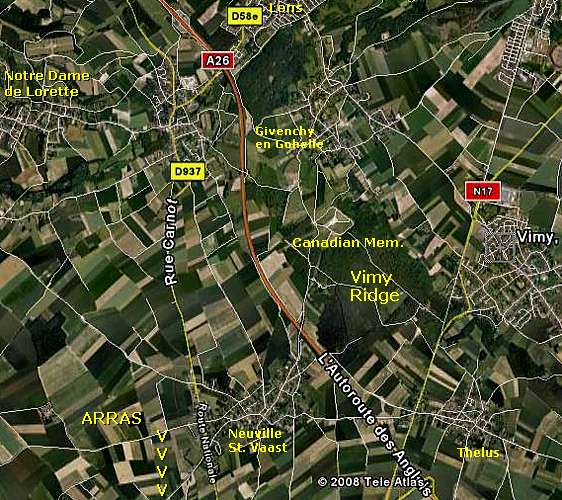

The French suffered approximately 150.000 casualties in their attempts to gain control of Vimy Ridge and surrounding territory. Following the Third Battle of Artois (or for the British the Battle of Loos (September 1915)) the Vimy sector became calm for a period of time.
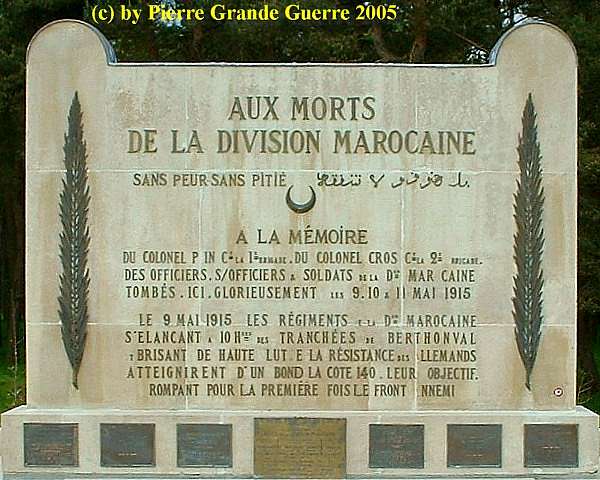
As on other former battlefields, on Vimy Ridge the fields are still full of unexploded explosives.
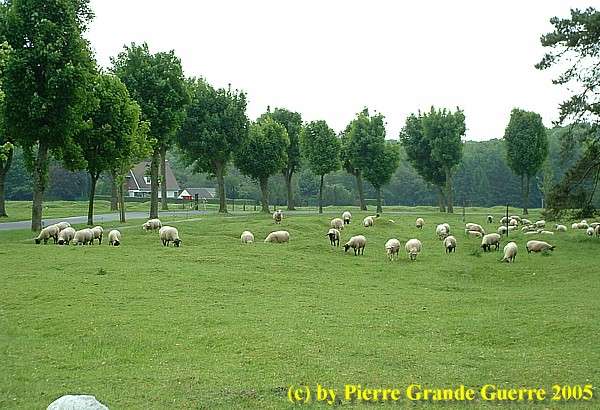
Visitors are warned not to walk outside the marked paths.
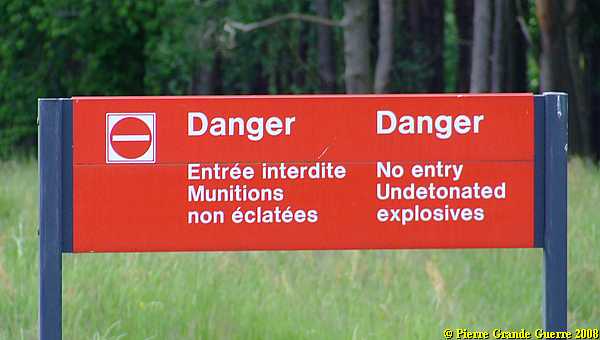
The hill and it's barren slopes provided little cover for attacking troops, ...
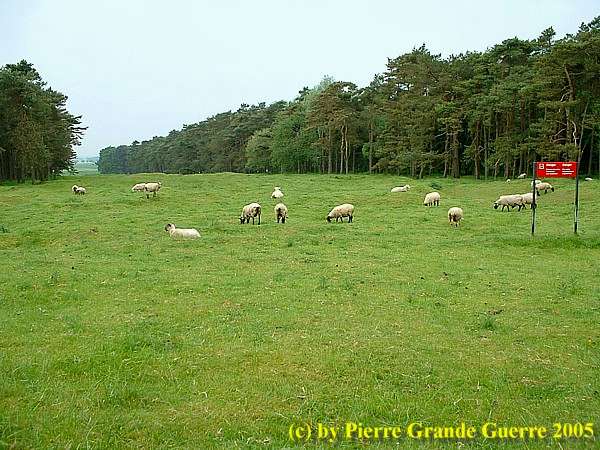
.. and it was an ideal position for machine guns and artillery to fire on enemy invaders.
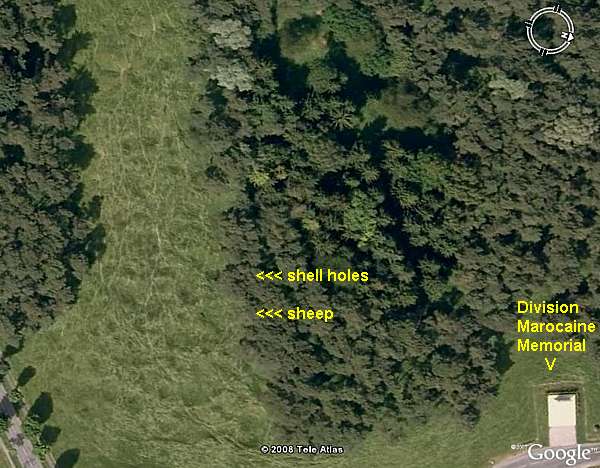
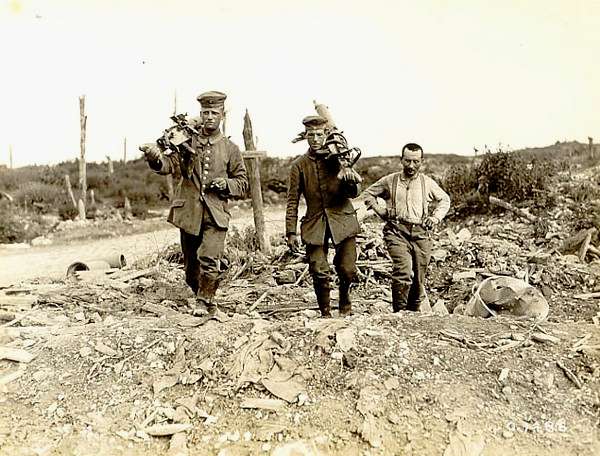
The Germans conquered Vimy Ridge in October 1914, during the First Battle of Artois. Situated 8 km northeast of Arras, the ridge is approximately 7 km in length with a height of 145 m. (Hill 145), providing a natural panorama view for tens of kilometers. The German Sixth Army had heavily fortified the ridge with tunnels, three rows of trenches behind barbed wire networks, artillery, and numerous machine gun nests to protect the Lens coal mines, which were essential to their war efforts.
Vimy Ridge was defended by the Gruppe Vimy, a formation under 1st Bavarian Army Corps Commander General Karl von Fasbender. A Division of Gruppe Souchez, under 8th Reserve Corps of General Georg Karl Wichura, was also involved in the front line defence along the most northern point of the Ridge: the Pimple.
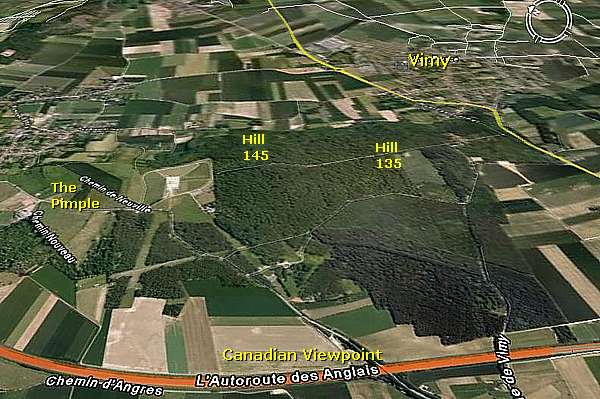
The Vimy Ridge Canadian National Memorial on Hill 145. In 2005 it was under construction of renovations.
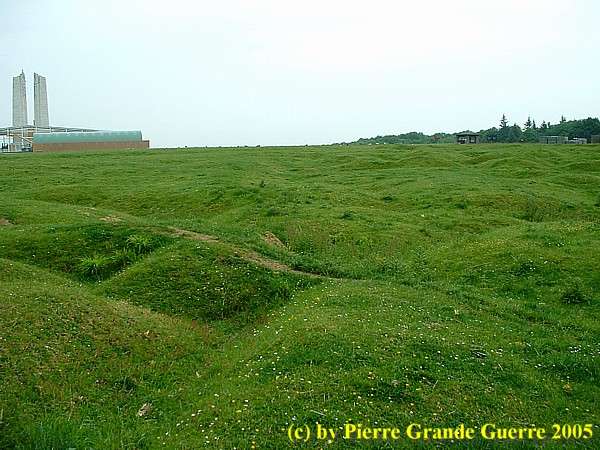
For now two views of the renovated Memorial at Hill 145 of May 2008. Rear side, west.


Traces of trenches and shell holes on the western slope of Hill 145.
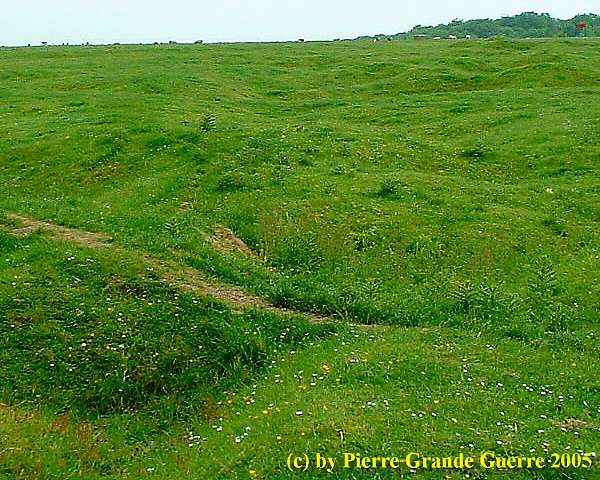
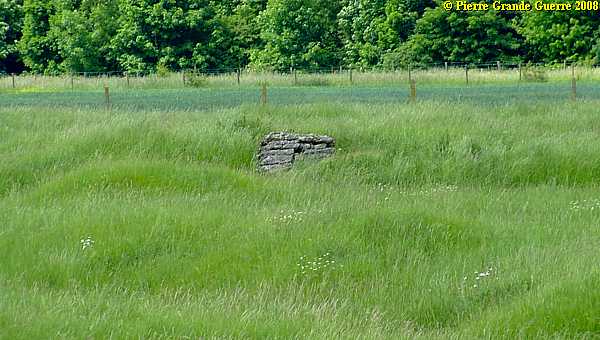
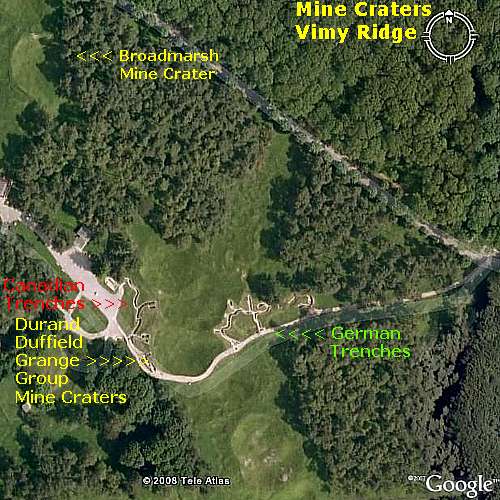
The Arras-Vimy sector was conducive to tunnel excavation owing to the soft, porous yet extremely stable nature of the chalk underground. As a result, an underground warfare had been an important feature of the Vimy sector since 1915, with no less than 19 distinct mine crater groups existing along the Canadian front by 1917. Since their arrival in 1916, British Royal Engineer Tunnelling Companies had been active with offensive mining against German miners with 5 Tunnelling Companies stationed along the Vimy front at the height of the operations.
In preparation for the assault, British
Tunnelling Companies, with the assistance of Canadian Engineers and
infantry, created extensive underground networks and fortifications.
Twelve subways, up to 1.2 km in length (the “Goodman” Subway), were
excavated at a depth of 10 meters. The subways connected reserve lines
to front lines, permitting soldiers to advance to the front quickly,
securely, and most important; unseen. Concealed light rail lines,
hospitals, command posts, water reservoirs, ammunition stores, mortar
posts, machine gun posts, and communication centres were also often
excavated in the subways. Many subways were also lit by electricity
provided by generators.
Thirteen mines were also laid under German positions, particularly near
the Pimple and the Broadmarsh Crater, with the intention of destroying
fortified points before to the assault.
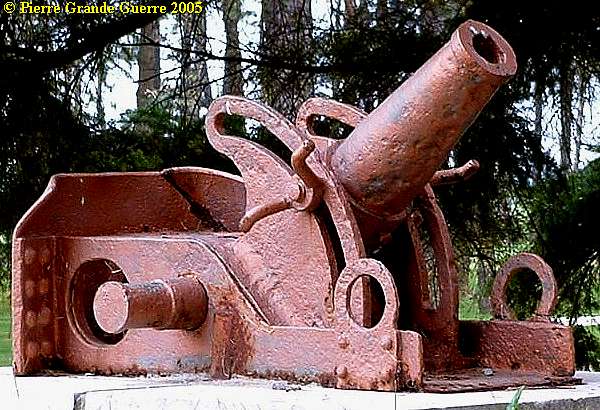
We visit the preserved and restaurated trench system on Hill 145.
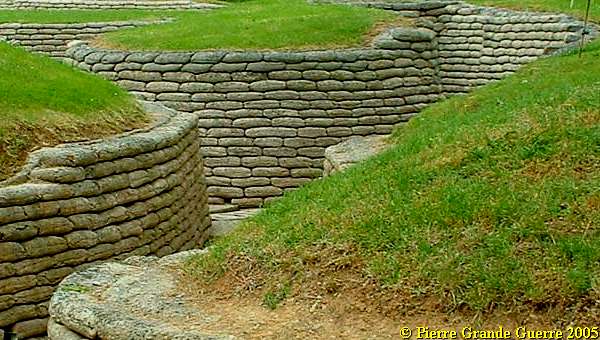
Before we go on: some concise information about the
Battle of Vimy Ridge (9 -12 April 1917)
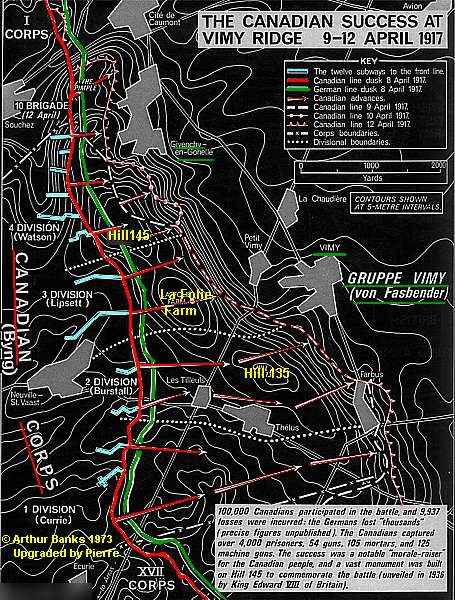
On 5 January 1917 General Byng was ordered to plan attacks for Vimy Ridge as the Canadian Corps objective for the Arras Offensive. A formal assault plan was adopted by early March 1917. For the first time, all four Canadian Divisions were to be assembled to operate in combat as one Corps. Four Canadian Divisions were joined by the British 5th Infantry Division, and reinforced by artillery, engineers, and labour units. This brought the Canadian Corps nominal strength up to 170,000 men of all ranks, of whom 97,184 were Canadians.
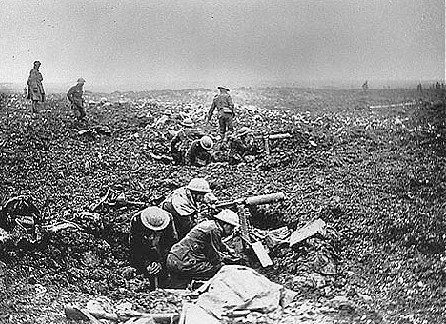
Allied commanders believed it impossible to capture the ridge. The Canadians had a plan. The ground assault had been planned meticulously. Full-scale replicas of the Vimy terrain were built to rehearse. Five kilometres of subterranean tunnels and subways were dug in order to move Canadian troops and ammunition up to the front without their being seen by German observers.
On 2 April 1917, an artillery bombardment of 7 days ahead with 2.800 guns was stepped up to wear down the German soldiers. Before the battle began, more than one million shells had been fired into German trenches.
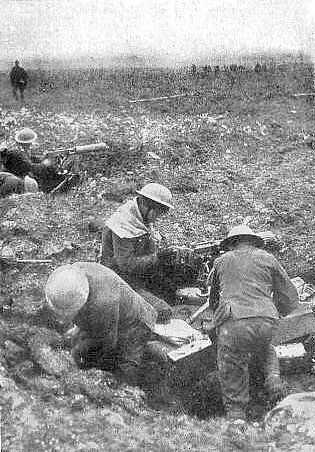
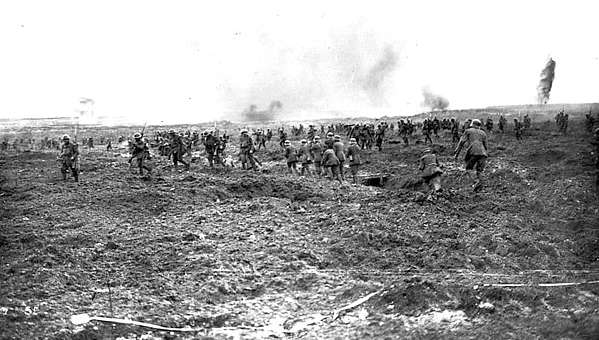
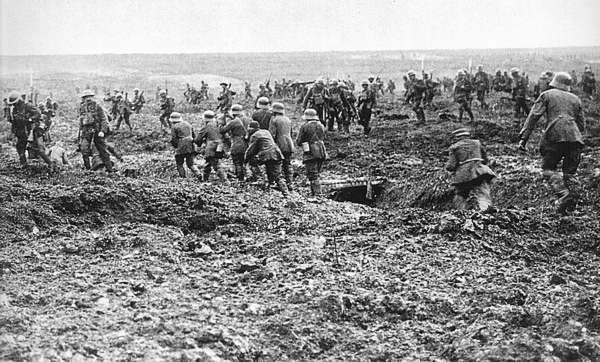
The Germans were rather surprised. The did expect an attack. But they presumed the start of the large offensive would take another 2 or 3 weeks.
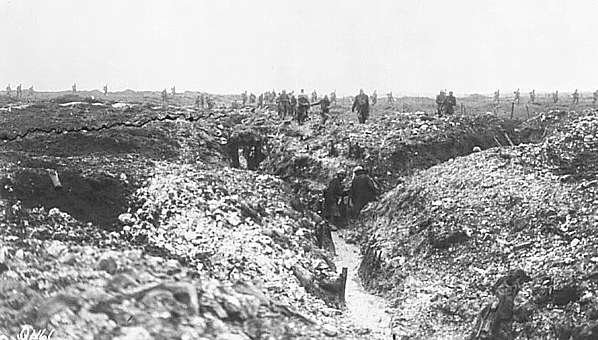

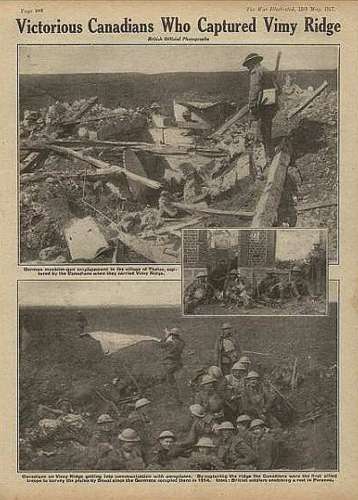

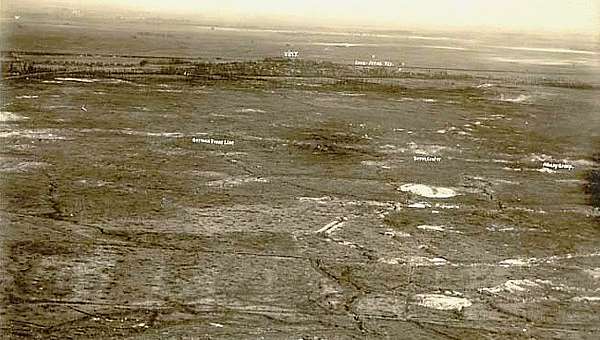
We visit the trenches, which the Canadian Ministry of Veteran Affairs preserves along the Grange Group Mine Craters southeast of the Memorial.
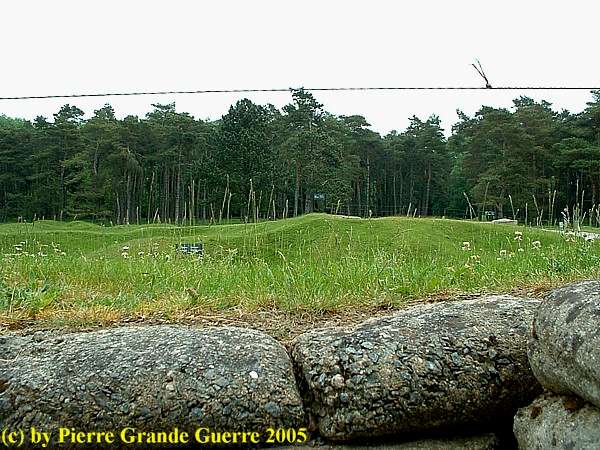
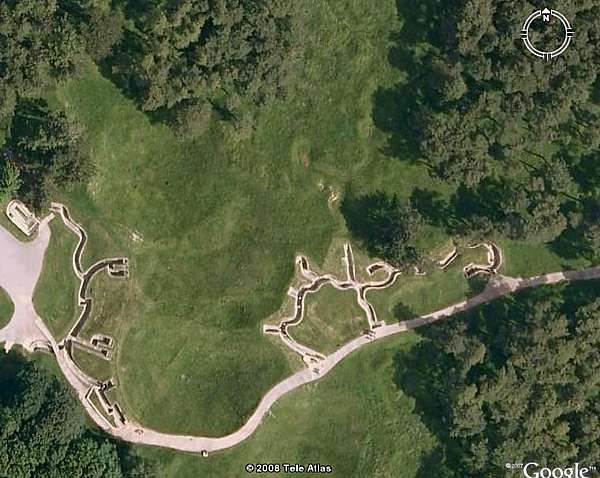

Not many words from here now. Let the photo's tell their own story.
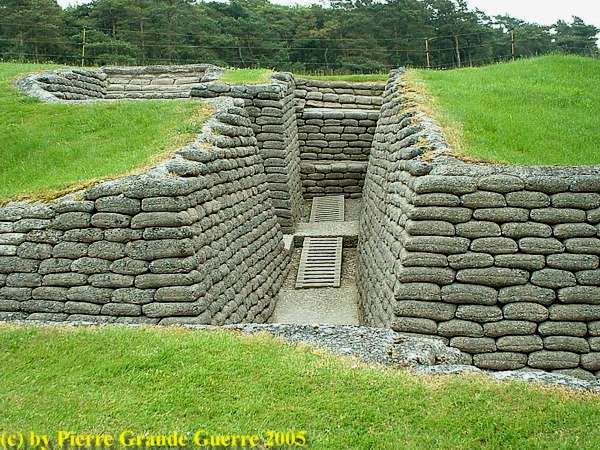
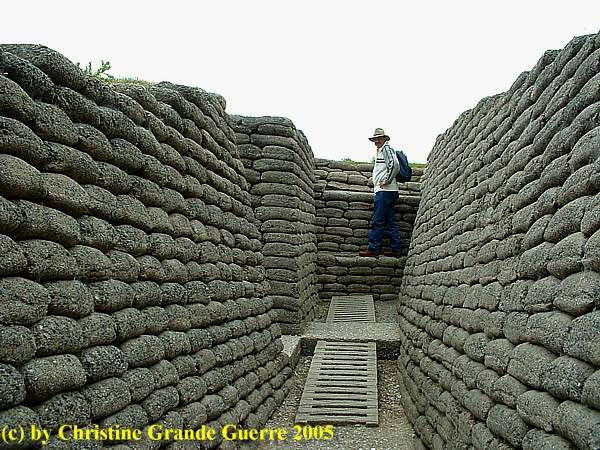

View at the Grange Group Mine Craters from the Canadian Parapet.
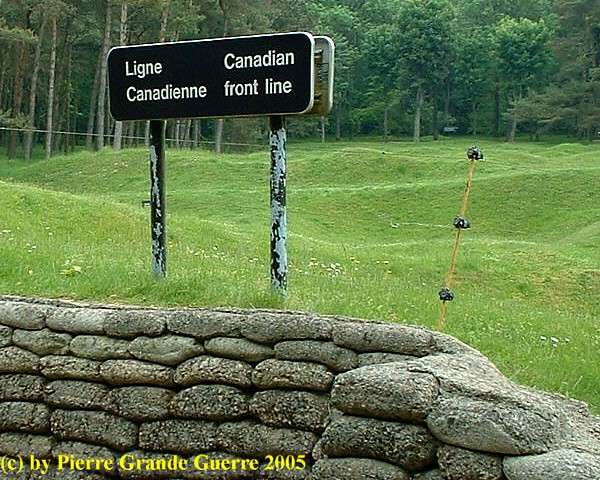

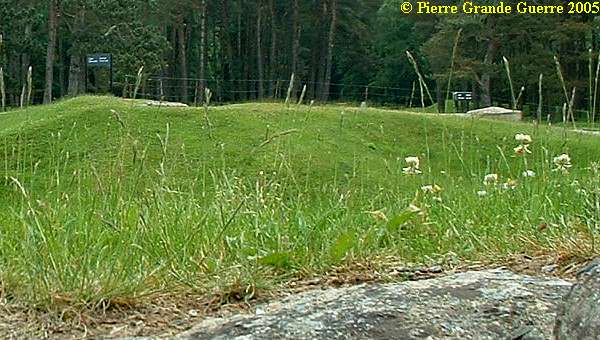
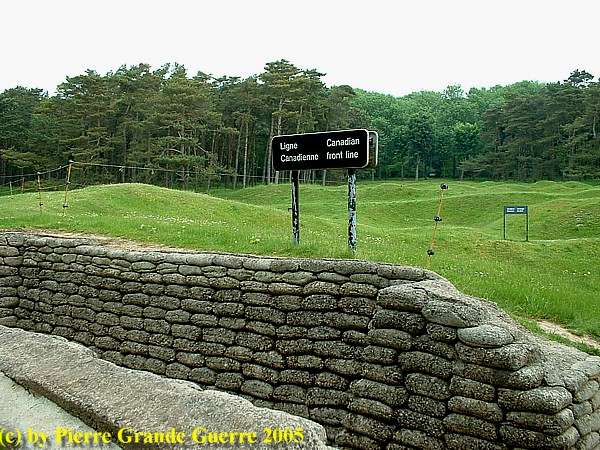
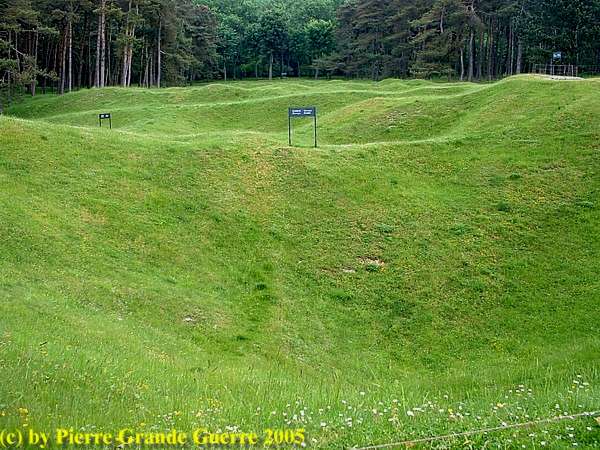

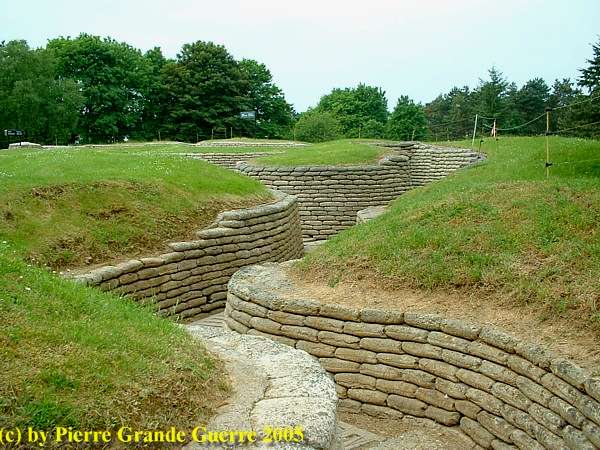
View from the German 1st Line over the craters to the Canadian 1st line.
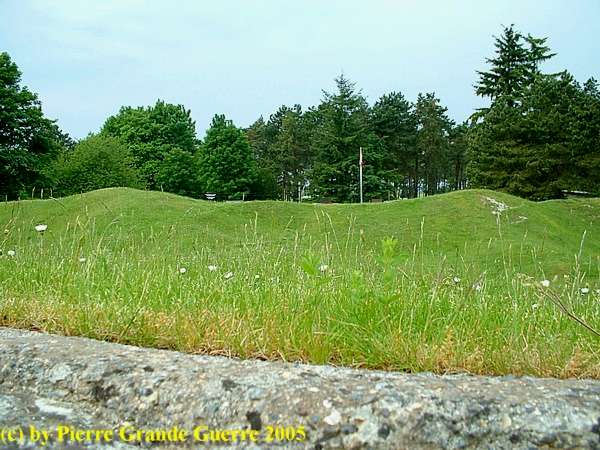
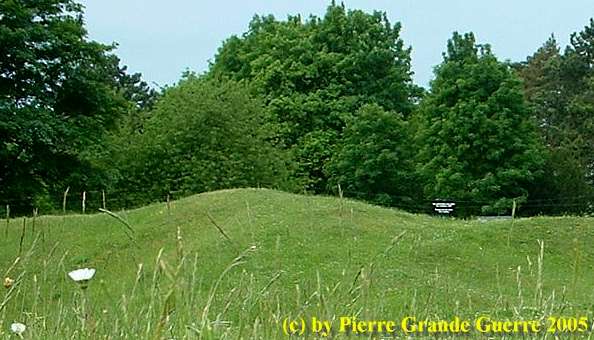
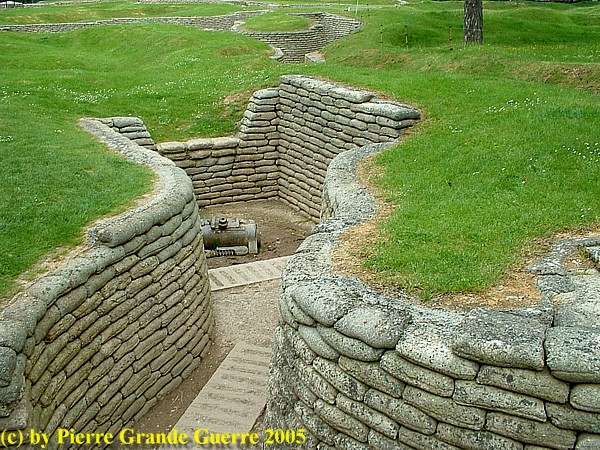

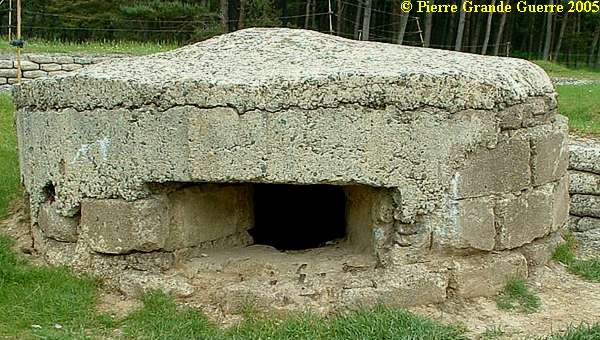
West of the German lines: traces of trenches, shell holes, and mine craters.
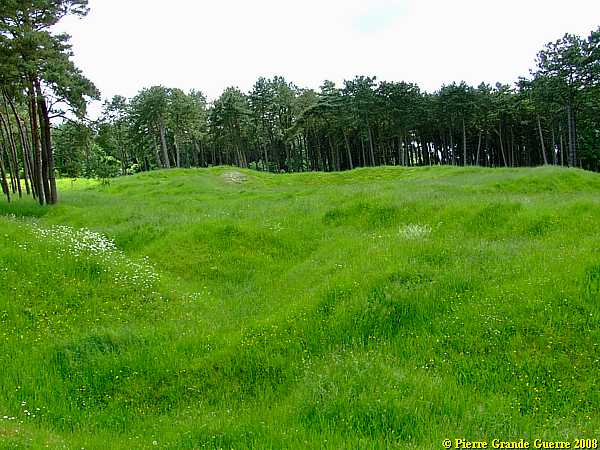
Lichfield Crater Cemetery
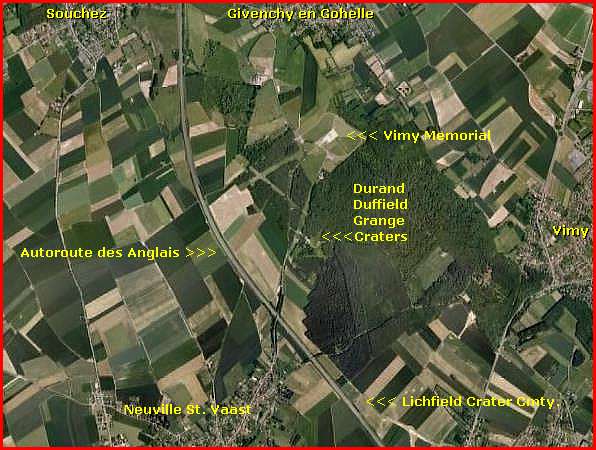
The Lichfield Crater lies near the most southern point of Vimy Ridge, along the Autoroute des Anglais.
A tunnel subway with a length of around 500 meters, running from west to east, lead to the Lichfield Mine, which has been blown on 9 April 1917 under the German "Volker" trench network. The diameter of the Crater is 35 meter.
Nowadays the Lichfield Crater is a War Cemetery, a mass grave for Canadian soldiers and officers, fallen during the period of 9 and 10 April 1917.
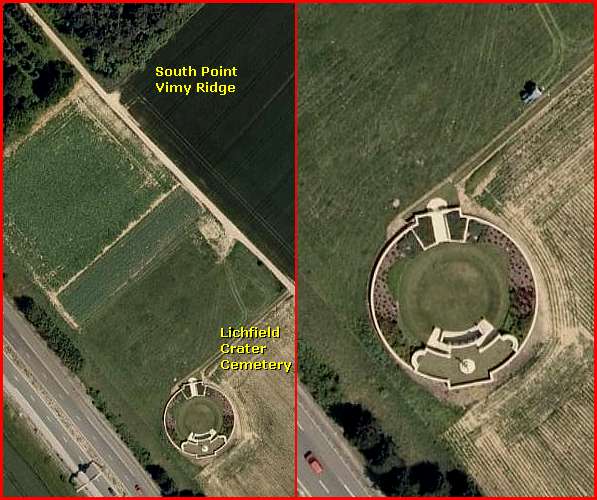
The most southern point of the wood at the foot of Vimy Ridge is also still dangerous terrain.
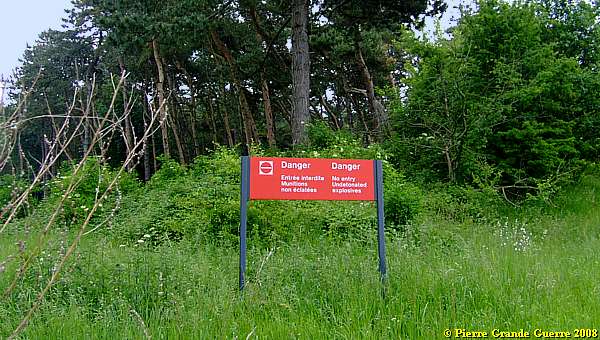
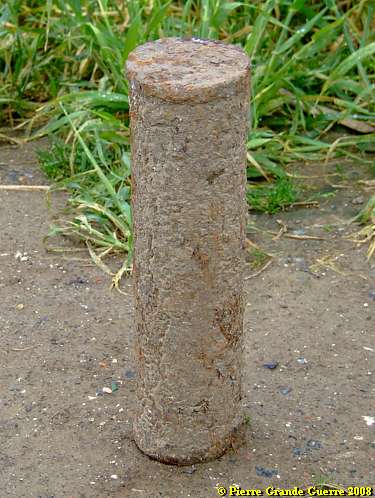
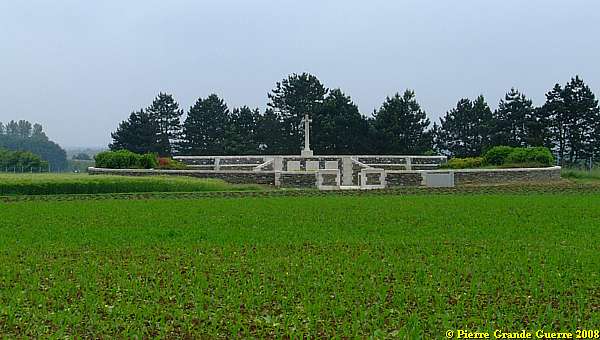
The Lichfield Crater was one of two mine craters (the other being Zivy Crater), which were used by the Canadian Corps Burial Officer in 1917 for the burial of bodies found on the Vimy battlefield.
The numerous groups of graves, made about this time by the Canadians, were not named as a rule, but serially lettered and numbered; the original name for Lichfield Crater was CB 2 A.
The crater is essentially a mass graves and
contains 57 First World War burials, 15 of them unidentified. All of
the men buried here died on 9 or 10 April 1917 with one exception, a
soldier who died in April 1916, whose grave was found on the edge of
the crater after the Armistice and is the only one marked by a
headstone. The names of the rest of those buried in the crater are
inscribed on panels fixed to the boundary wall. The cemetery was
designed by W H Cowlishaw.
Source: Commonwealth War Graves Commission.
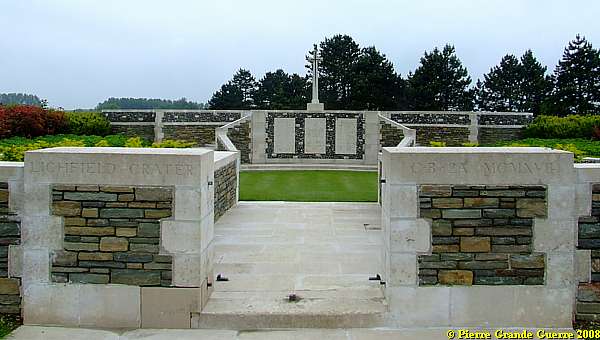

From left to right:
Names of Canadian soldiers, ...

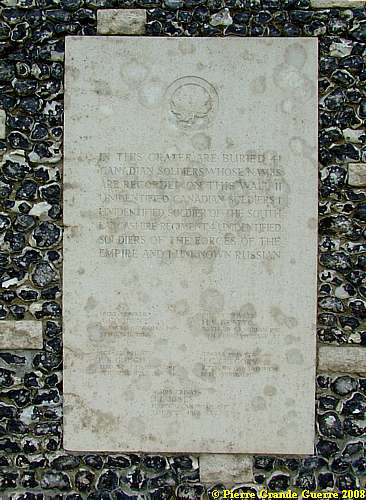
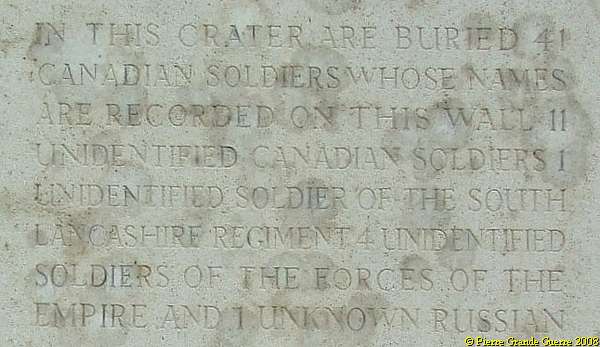
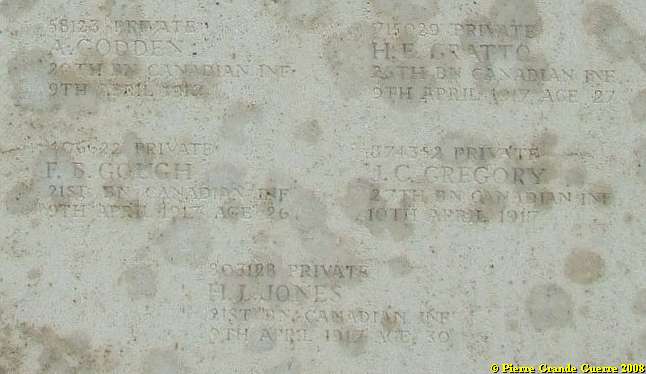
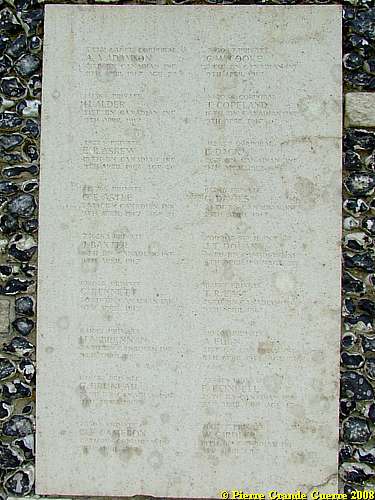
View from the Cross of Sacrifice at the tip of Vimy Ridge. On the right stands one single headstone ...



Or continue to: "CHAMPAGNE - St. Hilaire-le-Grand - Mont Navarin"

Inleiding: Franz Von Papen & Werner Horn; schaker en pion
Onlangs stuitte ik in een oud boek (1) van 1919 op een opmerkelijk verhaal over een Duitse Luitenant, die in begin februari 1915 een half geslaagde bomaanslag pleegt op een spoorbrug over een grensrivier tussen de Verenigde Staten en Canada. Ook al staat de bekentenis van de dader, Werner Horn, deels in het boek te lezen, de naam van zijn opdrachtgever zal Horn blijven verzwijgen. Na wat verder zoeken vond ik ook de naam van Horn’s opdrachtgever, Franz von Papen, een van de aangeklaagden van het latere Neurenberg Proces in 1946.
In een Grote Oorlog als de Eerste Wereldoorlog is Horn’s aanslag op de brug uiteraard slechts een bescheiden wapenfeit. Toch vermoed ik dat dit relatief onbekende verhaal, dat de geschiedenis is ingegaan als de “ Vanceboro International Bridge Bombing ”, nog interessante kanten kent. Het is onder andere een spionageverhaal over hoe in een groter plan een sluwe schaker zijn naïeve pion offert.
Beknopte situatieschets Canada en de Verenigde Staten in 1915

This trip we start at the Léomont near Vitrimont and we will with some exceptions concentrate on the Battle of Lorraine of August-September 1914 in the area, called, the “Trouée de Charmes”, the Gap of Charmes.
After the Léomont battlefield we continue our explorations to Friscati hill and its Nécropole Nationale. Next we pay a visit to the battlefield of la Tombe to go on to the Château de Lunéville. There we cross the Vezouze to move on southward to the Bayon Nécropole Nationale. At Bayon we cross the Moselle to pass Charmes for the panorama over the battlefield from the Haut du Mont. North-west of Charmes we will visit the British Military Cemetery containing 1918 war victims. From Charmes we go northward to the battlefield of the First French Victory of the Great War, the Battle of Rozelieures of 25 August 1914. North of Rozelieures we will visit the village of Gerbéviller. From there we make a jump northward to visit the ruins of Fort de Manonviller to finish with an interesting French Dressing Station bunker, west of Domjevin.


During this visit, we try to focus on the day that the momentum of the battle switched from the French side to the advantage of the Bavarian side: the day of 20 August 1914, when the Bavarians rapidly re-conquered the territory around Morhange , being also the day of the start of their rather successful “Schlacht in Lothringen”.
We will visit beautiful landscapes of the "Parc Naturel Régional de Lorraine", memorials, ossuaries, and cemeteries. Sometimes we will divert to other periods of the Great War, honouring Russian and Romanian soldiers, who died in this sector. We start our route at the border village of Manhoué, and via Frémery, Oron, Chicourt, Morhange, Riche, Conthil, Lidrezing, Dieuze, Vergaville, Bidestroff, Cutting, Bisping we will finish in Nomeny and Mailly-sur-Seille, where the Germans halted their advance on 20 August 1914, and where they constructed from 1915 some interesting bunkers.














